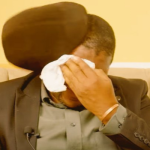Just days after hosting the 44th SADC Summit, Zimbabwe finds itself plunged back into the familiar darkness of widespread load shedding.
The Zimbabwe Electricity Supply Authority (ZESA) has announced increased power rationing across the country, blaming a technical fault at the Hwange Thermal Power Station’s Unit 8.
“ZESA Holdings would like to inform its valued customers that the national power grid is currently experiencing reduced electricity generation capacity due to a technical challenge that occurred at the Hwange Thermal Power Station’s Unit 8. As a result of this generation shortfall, the utility has had to implement increased load shedding schedules across the country in order to balance electricity supply and demand. Our technical teams are frantically working on resolving the fault so as to minimize the impact on customers. We apologize for the inconvenience and appreciate our customers’ patience and understanding during this period,” Reads the statement.
This announcement has sparked frustration and anxiety among Zimbabweans, who had briefly enjoyed a reprieve from the relentless power cuts during the summit.
The government, eager to showcase a semblance of normalcy during the regional gathering, had instructed ZESA to ensure selected venues remained free from load shedding. This directive came amidst widespread blackouts lasting up to 18 hours daily, with some areas experiencing power outages from 6 AM to 9 PM or even 11 PM.
The government’s directive to ZESA’s subsidiary, ZETDC, to ensure uninterrupted power supply during the SADC meetings was a temporary Band-Aid solution to a much larger, systemic problem. It highlighted the government’s inability to provide a reliable and consistent power supply for its citizens, even during high-profile events.
The SADC Summit events, which included the 7th SADC Industrialisation Week held at the Harare International Conference Centre (HICC) from July 28 to August 2, were carefully chosen to project an image of stability and progress.
However, the reality on the ground was far different, with most Zimbabweans enduring daily power cuts that severely impacted their lives.
The recent announcement of increased load shedding, attributed to a technical fault at Hwange, has brought back the harsh reality of Zimbabwe’s power crisis. The Hwange power station, the country’s largest, is currently generating only 635 megawatts, a significant drop from the over 1,000 megawatts it was producing before August 21.
This shortfall, coupled with the ongoing drought that has severely reduced water levels at the Kariba Dam, another key source of power generation, has forced ZESA to implement increased load shedding schedules across the nation.
The technical fault at Hwange, a plant notorious for frequent breakdowns due to aging equipment, adds to Zimbabwe’s ongoing power woes. The country’s installed capacity is 2,200 megawatts, but it is currently generating only 897 megawatts.
The situation is further exacerbated by the ongoing drought, which has severely reduced water levels at the Kariba Dam, another key source of power generation.
The Zambezi River Authority, responsible for managing the Kariba Dam, has reported that water levels are around 12.8 percent in early June 2024, compared to 29.1 percent in early June 2023. This decline is attributed to the ongoing drought affecting the region, with water levels unlikely to increase in the coming weeks.
The impact of the power crisis extends far beyond the inconvenience of flickering lights. Traffic disruptions, longer driving times due to malfunctioning traffic signals, and temporarily unavailable essential services like ATMs and filling stations are all likely consequences.
The power outages also pose a significant security threat. Blackouts could disrupt security protocols, including alarm systems and electronic fences, creating opportunities for opportunistic criminal activity.
The situation highlights the fragility of Zimbabwe’s power infrastructure and the ongoing challenges the country faces in meeting its energy needs. The government’s efforts to address the power crisis have been met with mixed results, and the recent announcement of increased load shedding is a stark reminder of the ongoing struggle.
The government’s response to the power crisis has been characterized by a lack of transparency and accountability. While the government has blamed the power cuts on a combination of factors, including aging infrastructure, drought, and low water levels at Kariba, there is a growing sense of frustration among Zimbabweans who feel that the government is not doing enough to address the problem.
The government’s decision to prioritize power supply to selected venues during the SADC Summit, while the majority of the country endured prolonged blackouts, has further fueled public anger. Many Zimbabweans see this as a blatant disregard for the needs of ordinary citizens, who are forced to cope with the daily disruptions caused by the power outages.
The power crisis is not just a technical issue; it is a symptom of a deeper malaise in Zimbabwe’s economy and political system. The government’s failure to invest in infrastructure, diversify energy sources, and address corruption has left the country vulnerable to power shortages, which have a devastating impact on businesses, households, and the overall economy.
As ZESA continues to grapple with the technical fault at Hwange, Zimbabweans are left bracing for a prolonged period of darkness, with the full extent of the impact yet to be felt.
The government’s ability to address the power crisis and ensure a reliable and sustainable energy supply remains a key challenge, one that will have a significant impact on the lives of Zimbabweans for the foreseeable future.












